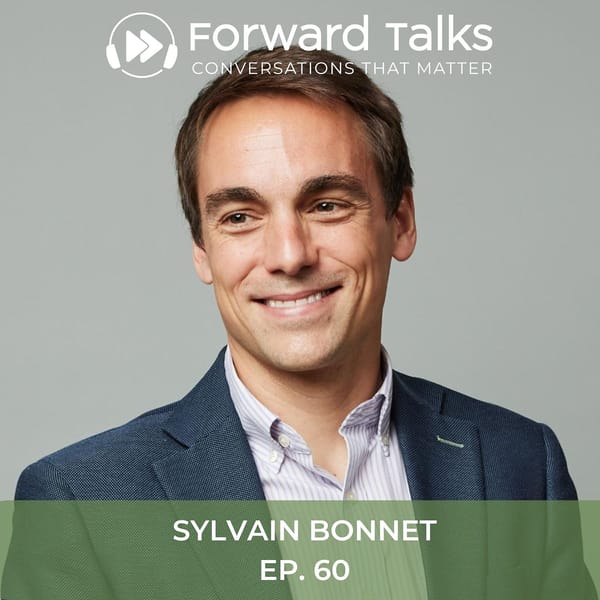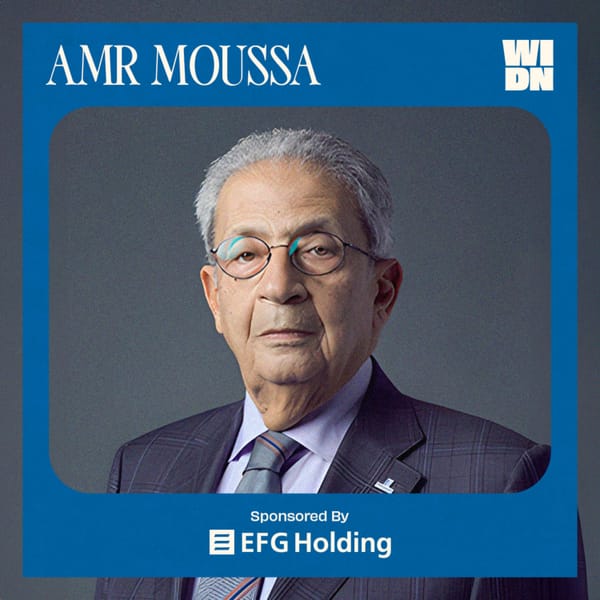This week, we’re talking with Sherif El-Helw about the timing and considerations ahead of an exit, and the role of an external advisor to support the sale process.
Sherif has worked with with firms such as Morgan Stanley, Booz & Co, Beltone Financial, Akanar Partners and is now Managing Director at Arqaam Capital. He has over 24 years of experience covering Corporate Development, financial structuring, valuation, managing teams and has executed over 10b USD worth of M&A transactions.
Transcript
Nabil Ismail
[00:05 - 00:17] Hello and welcome to the GC Call. This is a podcast we're bringing to you from Gulf Capital, the leading alternative investment firm in emerging markets from North Africa to Southeast Asia. I'm Nabil Ismail, Executive Director.
Alvaro Abella
[00:18 - 00:33] And I'm Alvaro Abella, Managing Director in the Private Equity Team. Think of the GC Call as a window into the investment process. In addition to our own expertise, you'll hear from other regional investors, entrepreneurs and management teams, as well as advisors who participate in the overall process to demystify it together.
Nabil Ismail
[00:34 - 00:56] We're continuing our conversation about exits today with Sherif El-Helw. Sherif has worked with firms such as Morgan Stanley, Booz & Co., Beltone Financials, Akarnar Partners and is now Managing Director at Arqaam Capital. He has over 24 years of experience covering corporate development, financial structuring,
[00:56 - 01:09] valuation, managing teams and has executed over $10 billion worth of M&A transactions. We'll talk about the considerations ahead of an exit and within that, the role of the external advisor to support the sale process.
Alvaro Abella
[01:12 - 01:15] Very nice to meet you, Sharif. I've heard a lot of good things about you.
Sherif El-Helw
[01:15 - 01:17] Thank you. That's very kind.
Nabil Ismail
[01:17 - 01:43] You're dynamo. He gets things done. That's what we like to hear. Thank you, guys. Sharif, the last call we had was with Mohammad Jafar. And basically in that episode, we were talking about his experience in exiting a startup, but at the same time, putting on the investor hat. We really want to dig deep in today's episode and talk a bit more about when to launch the
[01:43 - 02:05] process, the actual process. How do you phase it? Bidders, how do they come? When do you negotiate? So we'll get to each one of these between you and Alvaro, but I'd like to maybe to start with the first question, which is when do you actually launch a process? Because a lot of times you receive inbound interest versus launching a proper process.
Sherif El-Helw
[02:06 - 02:29] So if we take a step back and kind of think more big picture, I think it's critical to align stakeholders before embarking on this journey, because once you do hit the go button, really the ideal scenario is for you to be fully prepared and have a very clear plan and try to execute as fast as possible.
[02:30 - 02:56] And so timing can be affected by many different things. So one is I think stakeholder alignment is absolutely critical, where all the stakeholders, being the shareholders, the management and the board, have a clear or as clear as possible indication in terms of what it is that they're trying to achieve from a potential transaction. The second thing that's just as important is timing relative to market environment.
[02:57 - 03:24] Look, sometimes we work with clients on the sell side where the need to exit is of a certain urgency because of certain dynamics, potentially expiration of fund life, change of kind of investment strategy. So the decision to move on and exit the asset is of top priority. And so if one has the flexibility to time the sale process, to align with kind of optimal market conditions,
[03:24 - 03:35] I think this is always something that as a sell side banker, as an M&A banker, we would like to always advise our clients to keep that in mind as well. Because at the end of the day, you only sell once.
Alvaro Abella
[03:36 - 03:59] So Sharif, theoretically, that sounds great. But if we talk about concrete examples, in Egypt, the local currency has lost, what, 60-70% value over the last 12 months. How do you advise and support, whether it's shareholders or companies that are looking at that exit,
[03:59 - 04:01] in spite of the current environment?
Sherif El-Helw
[04:02 - 04:27] I think it goes back to the basics, Alvaro. And so different assets present different investment opportunities. And even in times of significant market dislocations and headwinds and challenges, there's always going to be appetite for the right asset, should it be packaged and marketed to the right audience. We are in the middle of a similar situation as we speak, where the asset that we are marketing
[04:27 - 04:49] happens to be actually one of the largest exporters out of the Egyptian market. And that, by design or by definition, means that everything related to FX challenges and the ability to source foreign currency to fund your working capital, for an asset of this nature, they tend to be very well hedged and they pretend to present
[04:49 - 05:15] actually a very unique opportunity that stands out. So a company that still demonstrates its ability to be a dominant player in terms of market share, still generating above average and healthy operating margins, has a business model where the export side of it is actually the core. I think this is the type of profile business today that will continue to guard our interest
[05:15 - 05:18] and continue to attract the right kind of investor.
Nabil Ismail
[05:18 - 05:40] So from time to time you can get approached by a potential buyer and at that point, you come across this really tough question, which is, do I even entertain hiring an investment bank? I know the potential buyer, we can do everything in-house. The question of internal versus external, if you can just elaborate on that and to the extent
[05:40 - 05:44] possible, local versus regional versus global banks.
Sherif El-Helw
[05:45 - 06:08] Okay, so the way I would think about that, Nabil, basically, why hire an investment bank, which is kind of the other side of the coin, right? Really, I think there's always going to be four or five key reasons why clients would seriously consider hiring an investment bank on their side, whether or not it is a solicited or unsolicited approach, right?
[06:09 - 06:29] So on top of the list is really allow management and the stakeholders to focus on their business. Exit processes tend to be very distracting and require quite a bit of resources and time in preparing the company and running through a due diligence process. And so at some time, I think managed priority is to run the business
[06:29 - 06:50] and try to have the right people on their side to help them navigate a sale process. On the non-solicited approach, one of the benefits the investment bank brings to the table as well is access to a network of potential investors. And I think this is something that's also very important, should you want to launch a process and talk to multiple potential investors.
[06:51 - 07:15] But one of the important things as well is it's always advisable to separate the principles from the day-to-day process management and negotiations. That can create a lot of tension early on in the process that's completely unhelpful. And once you get a bit more advanced in the process, having a buffer between the principle and the counterparty goes a very long way and allows the banker and the advisor
[07:15 - 07:40] to potentially take more aggressive positions to protect their client's interest, but also have a fallback scenario. And so there's a lot of benefits of hiring the right banker. But look, to be very honest with you, sometimes if there's an inbound unsolicited expression of interest and the company is a well-managed institutionalized business, many, if not most
[07:40 - 08:03] of the private equity investors in some situations will try to manage these transactions on their own. But that really only works, Anabil, if the buyer that came knocking on the door, you have deep conviction that it's the right buyer. So instead of spending three, four, five months getting the company ready, marketing to 20, 30 different investors, so you can end up with this specific buyer,
[08:04 - 08:27] sometimes this buyer shows up up front and there you have to be pragmatic. What you give up on the margin is the ability to keep the price tension ongoing by having multiple people at the table. But at the same time, you can sometimes maximize chances of closing by having the right buyer up front and focusing with them. Now, in terms of local, regional, international, the benefit of hiring a local or regional
[08:27 - 08:53] investment bank when you're talking about kind of MENA-based transactions is that the local market know-how goes a very, very long way. The other thing obviously has to do with deal size. The reality is most international banks, if we talk about the global bulge bracket firms, have very, very specific deal requirements in terms of deal size and fees. Those tend to be way above the range of the majority of your typical
[08:53 - 09:19] corporate private equity-backed businesses in the region. And so I think also the selection of the type of investment bank you're going to hire really has to do with what is the market you're working in and what is the target universe you're trying to attract, right? So in certain situations, very esoteric industries, let's take mining, for example, I don't think there's a lot of mining MENA expertise amongst local and regional boutiques.
[09:20 - 09:43] Sometimes you do want to go for an international name, even if it's a boutique, but international specialized firm that brings very specific industry expertise. The other side of the cone, sometimes you want to market your asset to global strategic buyers. Sometimes the local and the regional banks might not have the right or the same access to such strategic names. So that would be the key kind of criteria to consider,
[09:43 - 09:47] whether you need an investment banker and what type of investment banker you should hire.
Nabil Ismail
[09:49 - 09:58] I think maybe Alvaro, one point that we've touched upon was alignment amongst the stakeholders. Would you like to elaborate on what that means?
Alvaro Abella
[09:59 - 10:23] Think about it not only amongst the shareholder group, but also the other stakeholders, meaning management. What is management's role going to be in the next version of that asset? Management, obviously for them, tends to be a bit of an uncertain time. And so if you address those questions and those issues earlier on,
[10:24 - 10:47] and you have a very definitive understanding and plan of what that company is going to be doing housed under whatever it is, the next form of that company, and how are management going to be compensated? Typically that's what we call the rollover. I think once you get to, and I'm sure Sharif will talk to us about that,
[10:48 - 11:09] but once you get to a certain level of maturity of the transaction, you obviously have to start talking to your banks if you have banking relationships, so that they are also aware of what's taking place. Typically in banking facilities, you have change of control provisions that might be triggered. Last but not least, regulators, right?
[11:09 - 11:29] Depending on the size of the business and what industry you're working, the regulators might have something to say. So it's probably better to sort of short circuit any tense conversation by having a good plan of how you're going to address which stakeholder at what time.
Sherif El-Helw
[11:29 - 11:50] Let me touch on the management point for one second before we move on. Incentives go a very long way, and especially with private equity-backed companies, when it's time for the private equity investor to exit, and if it's a minority stake, if you will, chances are another private equity investor will step in.
[11:51 - 12:12] And so the same process that the private equity investor went through the first time coming in, which is obviously negotiating the right deal and aligning the management team to maximize chances of exits at the highest returns through some kind of MIP program or incentive structure, and just as important, agreeing on the business plan.
[12:13 - 12:38] Once you step in through the door, that will be executed over your holding period. That same process will be repeated when you come to exit. And so it's also very important to have the stakeholders aligned along with those dimensions and making sure that the management team, A, it's the right team to continue, the second leg of the journey, if you will, or has the right incentives in place to go for another round with another financial sponsor.
Nabil Ismail
[12:39 - 13:01] And maybe if I take a pause for our audience, I think it's important to talk about the process itself. So how does investment banking exit process look like? So what is phase one? What is phase two? When do you share a teaser and the A? So if we can just go through the standard process, I know there's no specific standard process in general,
[13:01 - 13:06] but to the extent possible, I think this will be very educational for our audience.
Sherif El-Helw
[13:06 - 13:31] I'll try to keep it as big picture as possible, so not to get lost in all the details. But look, at the end of the day, the way we look at M&A processes for exits typically go through, I'll call it four key phases. Let's call phase one a preparation phase. So getting to understand the business, interacting intimately with the management team,
[13:31 - 13:54] you know, developing the financial model and what the business plan can look like, aligning stakeholders with what the plan is going to entail as we go live, start to prepare the documentation that will be required for marketing. So really the three key documents that most sale processes will include are a teaser,
[13:54 - 14:20] which is effectively a one, two, three, four slide page document that tends to be very high level, discusses the key highlights of the opportunity and allows you to use it to engage in initial market sounding, if you will. The second will be an information memorandum. The information memorandum is basically what it sounds like. It's a long document that tells
[14:20 - 14:42] everything about the company and discusses the opportunity and the business, the history, the operations, the management, the financials, and if necessary, the business plan and the forecast. The third document that is starts to be developed, but really is used a bit later in the process tends to be something like a management presentation, which comes later in the process when investors have a chance to actually come and sit with management.
[14:43 - 15:07] So phase one, let's call it preparation, is absolutely critical. We always advise our clients not to ever launch a process unless you're ready and ready is along all these dimensions. Once you're ready with aligning stakeholders, identifying the potential investor universe that you want to reach out to, and you've prepared the initial marketing materials, we move into phase
[15:07 - 15:31] two, which I call the go live phase. That's when you actually start doing marketing. So this is the marketing phase. Ideally, you want to do a bit of pre-marketing, which is very, very discrete market sounding where the investment banker uses their own relationships within the investor universe, starts having very discrete calls, sounding out potential investors, very high level
[15:31 - 15:53] discussion of the opportunity. And that pre-marketing process, I think it's important so that you have an actual real list of interested parties once you start sending out teasers aggressively. Post the pre-marketing, and that can take maybe a couple of weeks, you start to actually send out these teasers in conjunction with non-disclosure agreements. And so say on
[15:53 - 16:15] the pre-market, you identified 30 potential investors, you realize only 15 of them would actually be interested. You send the 15 names, those teasers and the non-disclosure agreements. And then you engage for a few days in discussing the teaser and the opportunity with the investor. And if they are interested, what they do is they execute the non-disclosure agreements,
[16:15 - 16:40] they'll negotiate it first and then execute it. And then they'll send it back. Once the information memorandum is ready to go, so you've received from the 15 teasers, say you've received 10 signed NDAs. What the investment banker does is they prepare a process letter, which is a formal letter that basically gives a signal that we are getting serious. This process letter is attached to information memoranda and is sent to the 10 parties. What does the process
[16:40 - 17:05] letter say? Lays out what the roadmap looks like. And so you typically tell investors, look, we're inviting you into our transaction. Attached is the information memorandum. Say you have six weeks to prepare your non-binding offer, because that becomes the first key milestone in terms of price discovery. And during the six-week process, we also lay out the rules
[17:05 - 17:29] of the game. You're allowed to ask questions. Maybe we avail one conference call with management, depending on the situation. But typically we try to limit any interaction with any investor, with the management team or the principals, during this marketing initial non-binding phase. The objective is to come out of the six, seven or eight-week phase, which we call marketing,
[17:30 - 17:54] with a non-binding offer or multiple non-binding offers in your hands. What is a non-binding offer? To keep it simple, it's an expression of interest from the investor based on the information memorandum and only based on the information they've seen during the six-week period. Not based on any due diligence, not based on any extensive management interaction, not based on necessarily site visits and things of that nature.
Alvaro Abella
[17:54 - 18:17] Can we maybe interject and ask a couple of questions? Because you mentioned several terms and topics which are key and typically are riddled with questions from either management or other shareholders. So NDA and price discovery. What about when you have processes to the
[18:17 - 18:40] outline of what you were talking about, hopefully 10 parties, some of them strategics. A lot of the times those strategics, you could call them tourists and want to have a little gander at the information. They want to look at under the hood a little bit. They know they're not going to
[18:40 - 19:03] put forward their best bid, but they want to learn about that business. And then the cat is out of the bag. You've got private information in the hands of strategic investors, strategic companies, corporates that potentially could come into your sector and compete with your company. How do you manage that?
Sherif El-Helw
[19:03 - 19:26] It's absolutely the right question. Look, it's always going to be a delicate balance. And with strategic buyers, sometimes you withhold information this early on in the process. And so there are scenarios where different versions of the information memoranda can go out to different types of audiences. But really, you are taking a certain level of risk. I think that's embedded
[19:26 - 19:47] in most processes when you're going to talk to multiple bidders, strategic and sponsors. But this is where the pre-marketing Alvaro can go a long way if you do it the proper fashion. And that's the job of the investment banker. Having the right advisor on your side that has the right relationships and the right access to these investors that they're going to
[19:47 - 20:11] talk to gives a chance for more, I would call it honest conversations in terms of really assessing how serious you are. So for example, if somebody hires us today to market an asset out of the Emirates or Saudi or Egypt, say in the consumer product sector, and the idea is to garner interest
[20:11 - 20:37] from strategic buyers, right? So I can develop a theoretical list of potential strategic buyers from Europe, US, Asia, Middle East, Africa. But if you do the next level of research, which is look at this company coming from Germany, for example, right? Have they ever done an M&A transaction in my region? How active are they in terms of acquisition? Has their board given any
[20:37 - 20:57] signal to the markets that it's time to enter the Middle East region, for example, which is usually a very strong signal that these guys are serious? And so you can do a bit more homework and research around the actual profile of the names of investors that you would like to invite to your process. But at the end of the day, there's always the chance that somebody wants to get access to
[20:57 - 21:21] information. Like you said, look under the hood, kick the tires around, try to get as much intelligence as possible and move on. And so if we have that concern, we don't actually provide that much sensitive information in the information memorandum side. And we try to really drive them to the point of submitting an honest non-binding offer. Because with strategic buyers, if you're
[21:21 - 21:43] talking about the highly institutional ones, they need significant support from their board and their stakeholders. And they have very high levels of corporate kind of governance. They can't just be sending NBOs and markets like the MENA market if they're not serious. And so if you get them to the non-binding offer phase and you generate an actual offer from them,
[21:44 - 22:06] chances are they're serious. And so you become a bit more open-minded with them in the due diligence phase. Again, you will not open up all your secrets. So for example, customer information, how much margin am I generating from my client base? Who are my top 10 clients that I'm selling to in the market? We typically will black out those details, even from the documents. And we
[22:06 - 22:24] won't allow them to look at that sensitive information until much later in the process, once they've evidenced the serious intent, they've almost completed the due diligence, and they're at the stage of final price confirmation, if you will. If you show the right seriousness and you get to the end of the process, we will kind of avail a chance for you
Alvaro Abella
[22:24 - 22:37] to review this stuff. And that's why I guess it's important to know the buyer universe very well, because that's when you decide who you show a little bit of leg and who you open the whole kimono.
Nabil Ismail
[22:37 - 22:38] C’mon man, why would you say that?
Alvaro Abella
[22:39 - 22:43] Come on, it's middle of the week, we can bring in these things.
Nabil Ismail
[22:45 - 23:06] And maybe building on that, basically, how do you know that this is a love letter versus a proper MBO? Because a lot of bidders just throw in a love letter, let's discover more, especially if you've done proper vendor due diligence, as we've discussed in our previous episodes, then the cost of just getting access to that information is very, very cheap.
Sherif El-Helw
[23:06 - 23:26] Again, I think it's impossible to completely hedge against all these risks, but there are some things that you can entertain. So for example, you can introduce the idea of breakup or walkaway fees and clauses. And so should somebody come into the next phase and have access to VDD
[23:26 - 23:50] reports or a virtual data room where they have access to information, and then they walk away from the process. And again, this is where having the right lawyers by your side can help you navigate some of this negotiation in terms of contracts. And they walk away or they exit the process after seeing information with no real or honest cause. Sometimes, very difficult,
[23:51 - 24:18] but sometimes you can secure some kind of breakup fee or a walkaway fee, where you make it a bit more expensive for them to take information and walk away. And the other thing in Abil that we typically see is that strategic buyers especially, they always ask for exclusivity. This is a very standard ask for strategic buyers coming into sale processes in this part of the
[24:18 - 24:40] world. And their view usually is, look, if we're going to get into this, we're getting into this because we are here to close this deal. We're not opportunistic. And so we will expect exclusivity up front to allow us to really deploy the resources and navigate through the acquisition process, et cetera, et cetera, et cetera. If there's an exclusivity being asked early on in the process,
[24:40 - 25:01] it gives you a lot more ammunition to counter put on the table the idea of a breakup fee. And those can range anywhere from two, three, and I've seen up to 10% of the deal value. The potential transaction value. And so these can be quite expensive mechanisms for people that
[25:01 - 25:20] aren't serious to enter into the process. But look, at the end of the day, the homework needs to be done up front before you go live and you allow people into a due diligence phase. You need to do as much homework as you can to really validate that these are serious bidders and try to protect yourself as much as possible. But it's never black or white.
Nabil Ismail
[25:24 - 25:45] Continuing on your phases, because we've talked about up to the NBO phase, post that you'll get into documentation and negotiation. So can we maybe build up on that? And Alvaro, if you can also chime in, especially on the negotiation side, when is it one to one, one to many? At what point in time are you negotiating? How do you manage that whole process?
Sherif El-Helw
[25:46 - 26:07] Well, after the non-binding offer, like you said, Nabil, you actually go through kind of due diligence and then you, you know, in the back end of that, you start negotiations and then you move towards closing and execution. So during the due diligence phase, depending on what the process looks like, so if it's a highly competitive process with multiple parties, say the company or the sellers, you know, invested in producing vendor due diligence reports,
[26:08 - 26:32] that allows the investors to review the reports, discuss them with the advisors that produce them, and if need be, do a small top up to the report to really laser in on specific areas. But this facilitates multiple horses in your DD phase, because you limit the amount of money they have to spend. So you kind of subsidize their due diligence costs up front for the benefit of
[26:32 - 26:56] getting multiple parties in your due diligence phase. Sometimes what we find to be very useful, we start to actually engage in high level negotiations around SPA and SHA terms as necessary. So that by the end of the due diligence phase, you have already identified what are the key areas and key points from the investor side that will be negotiated aggressively.
[26:57 - 27:21] So that at the end of DD phase, typically what happens is that you will have to select typically one party that has confirmed the final price post due diligence and have asked for an exclusive few weeks to sit at the table and negotiate contracts. And in the best case scenario, what you can do sometimes is take control of the narrative by developing the initial draft of the
[27:21 - 27:44] sale contracts. And what you do is you upload those into the data room as well, and you ask the bidders not only to submit their final price, but to submit a markup of the documents. And so you don't have to decide blind. So it's not just about price, right? You might finish due diligence and you get excited because one of your three bidders puts the highest price on the
[27:44 - 28:07] table that got you excited. And so you jump into exclusivity with them on contracts. But then you discover that they're asking for unreasonable indemnities or protections or structures that actually make the deal unrealistic to close. Or they don't even have the money. Or they don't have the money, the proof of funding, right? And so I think having the ability
[28:07 - 28:37] to see how the investor is going to mark up your potential contract goes a very long way, but comes with costs, right? So the seller at that time also will need to spend a decent amount of money in developing the initial drafts of the shareholders agreement and the share purchase agreement. But that's kind of how you think of negotiations, when to do it. Typically, you try to avoid getting into an exclusive negotiation unless the deal is kind of exclusive from the
[28:37 - 28:42] the stage of final bid confirmation. It's at the end of the due diligence phase.
Alvaro Abella
[28:42 - 28:57] If we go back to the sort of looking at the NBOs or non-binding offers, how do you select them? Is it purely on price or are there other sort of signs, telltales that you're looking for to bring those offers forward?
Sherif El-Helw
[28:58 - 29:03] Very good question and absolutely should not be exclusively price driven.
Nabil Ismail
[29:03 - 29:06] Why is that our only good question? My questions are not that good.
Sherif El-Helw
[29:09 - 29:32] Your questions are fantastic. Thank you. But look, I think this is one of the biggest pitfalls that sellers fall into. I think it's very easy to get carried away with a price that looks very interesting. But just as important is funding capacity, which Nabil highlighted. Do they have the funds to deploy and get this deal done?
[29:32 - 29:57] So in the example of many private equity investors in our part of the world, at the end of the day, they have maximum ticket sizes that they can underwrite. And so if you approach certain private equity investors in the sale process with a transaction size that's above their typical ticket size, you need to assume that even if they're very interested and serious, they will have to go and raise additional capital to get
[29:57 - 30:19] this deal done. So be it through their LPs or through their co-investor network. And so the more you get comfortable that this potential investor actually can fund the deal, this is just as important as the price to put on the table. Let me take a step back. When we send the process letters, we actually tell the investor what we want to see in the non-binding offer. And so we
[30:19 - 30:40] tell them, explain to me your price and how you reached it. So what is the valuation methodology used? What are the key assumptions you employed in reaching this valuation? Should you move to the next phase? What are the decisions, approvals, regulatory approvals you might need to get to get
[30:40 - 31:05] this deal done? Because if a bidder has a very cumbersome decision-making process, I take that into account in terms of probability of getting a deal closed with that bidder. You request some kind of comfort, even if it's high level, in terms of their access to funding. How fast can they move? Sometimes we ask them. And so we put several criteria so that we just don't fixate exclusively
[31:05 - 31:28] on price. And when you put all these criteria together, you actually can develop a pretty good view in terms of who you think can or cannot get this deal done. Focusing on price up front is the biggest pitfall because price always changes down the road. And then we can talk a bit about structures, how to mitigate price fluctuation on these kind of processes. But
[31:28 - 31:38] you should not just focus on price. I mean, it's important by all means. We're not here to pretend that price is not important, but it should be part of a broader decision-making framework.
Nabil Ismail
[31:39 - 32:03] I think that's very useful. And probably my last question, it's really around pausing auctions. When is the right time to pause? Is it early on? Is it at the NBL phase? And when do you restart? Because you're really trying to avoid reputational damage. You don't want to go back to market if you've been in market. So maybe if you can just talk to us about the mechanics and
[32:03 - 32:08] the art of pausing or stopping and just managing that whole process.
Sherif El-Helw
[32:08 - 32:29] This is an area that creates a lot of tension sometimes and distress with clients because people get very heavily invested in these sale processes. It takes a lot of time. You spend a lot of money and you hate to see it at some point being terminated without getting the outcome that you've signed up for from the beginning. And I think this is a very important part of the
[32:29 - 32:50] investment banker's role as well. It's probably one of the more tough conversations is how to manage the client if the time comes that you want to pull the plug on the process. But in my experience and my advice typically is that there are certain natural parts of the process and the overall timeline where it makes sense to pull away.
[32:50 - 33:12] So the first one is at the back of the pre-marketing. And so this is the least disruptive point to walk away from a sale process. So you maybe have spent a few months getting the company ready. You've developed the documentation. You've built the financial model. You've agreed on the investor list with the sellers. And it's time to pick
[33:12 - 33:38] up the phone and start to market sound with 10, 15, 20 investors. If the feedback at that point is not in line with what you are hoping to hear, so demand for the asset at this stage of time for whatever reason is not really high. There are concerns about the industry that the company's operating in at that specific point in time. The market environment is not conducive to generating
[33:38 - 34:01] the right kind of pricing tension and price discovery for your client. This is the feedback that at this point you could have a chance to walk away. The closest example to that, if you were doing an IPO, let's talk about kind of public market processes for a few seconds. So in the IPO preparation phase, the very last step is you get to the intention to float. So
[34:01 - 34:27] that's the part where you actually make an announcement officially that I intend to come to market to do this offering. And it's a very regulated disclosure, whether you're listing in Abu Dhabi, Dubai, London, Saudi, Egypt, it's a very regulated process as to when you make this disclosure. And this disclosure usually happens after you do something PDIE, which is pre-deal
[34:27 - 34:49] investor education. This is the period of time, two to three weeks, where the selling syndicate of banks that are taking you to market in the IPO, go on discrete roadshows, talk to some of the big accounts, the fund managers that would participate in the offering, and they start getting initial feedback. Based on this PDIE, if you get the right feedback, you announce your
[34:49 - 35:14] intention to float. Once you announce your intention to float, you're live. If you cancel the IPO after that point, it doesn't look good. It becomes actually a stain on the company's attempt to go public. So on the M&A side, on the private deal side, similarly, if you're able to get the right investor feedback early on before you go completely live, and you assess at that point that it's time to pull the plug, that would be obviously the safest time to press pause in
[35:14 - 35:38] the auction process. Assuming you've continued that point, the initial feedback wasn't too bad, you went to market, you have distributed your information memoranda, and you've received your non-binding offers. That becomes the next logical point to press pause or pull the plug before you enter into due diligence. That is a very, very intense period. People spend money, it takes a big
[35:38 - 35:57] toll on management, on advisors, on the board. Don't get into that phase if you're not satisfied and happy with the NBOs you have in your hand. If you assume that I have a non-binding offer in my hand, I don't really like it, but hopefully I'll make it better in the next phase, I think that's
Nabil Ismail
[35:57 - 36:01] a bit of a risk that you're going to take. There is only one direction, basically. It's always down.
Sherif El-Helw
[36:01 - 36:22] Exactly. As you know from your experience, people always use due diligence to push pricing down and find adjustments to the purchase price. Those would be the two natural parts. At the end of the day, deals fall through all the time. That's the reality of the M&A world. The majority of the transactions actually don't go through. There are situations that you have to cancel the deal more
[36:22 - 36:48] advanced when you're at negotiations of contracts. You don't see eye to eye, you can't agree on the sensitive legal terms. It's okay, the deal doesn't go through, everybody walks away. The other question is, when could you restart? That's also a very important one. You have to be patient. If you've gone through a process like that, especially a process where the market became aware that you've been engaged in the sale process for multiple months, that you've had bidders at
[36:48 - 37:09] the table, and that the deal fell through at the last second. If the market is aware of that dynamic, people will be a bit suspicious if you try to come back right away. There needs to be some kind of justification to come back to the market, be it a change of environment, a new potential buyer universe that approached you,
[37:09 - 37:31] something fundamentally changing in the process. Plus, you have to be realistic. There's deal fatigue. People always underestimate that. You drag a company or a management team or board through a six to nine month process, and then the deal fails. People are tired. It's very hard to get them all back to the table and restart everything and push through again.
[37:32 - 37:55] So, there needs to be a pause period. This pause period can have a natural cycle. If you're in the process mid-year, you pull the plug, maybe wait until the year is out, results are out again, business performance, you have another chance to assess it, prepare the company again, come to market maybe Q1 or Q2 after. So, there has to be a natural pause, and you have to really understand why did your deal fail.
[37:56 - 38:02] If the reasons why your transactions failed haven't changed, don't go back to market. Address those first.
Alvaro Abella
[38:02 - 38:16] I don't want to ask another question because you finally got the very important question label on your last one. So, if I ask another one, then it's going to be like 3-1 or 4-1 for me. Very, very important question.
Sherif El-Helw
[38:16 - 38:18] The most important question I've heard.
Nabil Ismail
[38:22 - 38:41] Thank you for joining us on this episode of the GC call with me, Nabil Ismail and Alvaro Avella. The GC call is brought to you by Gulf Capital and is produced by Amaya Media. You can follow the show in your favorite podcast app, Apple Podcasts, Spotify, Alrami, Pocket Cast, and all the others too. And we'll be back again in two weeks.












